Where did British art come from?
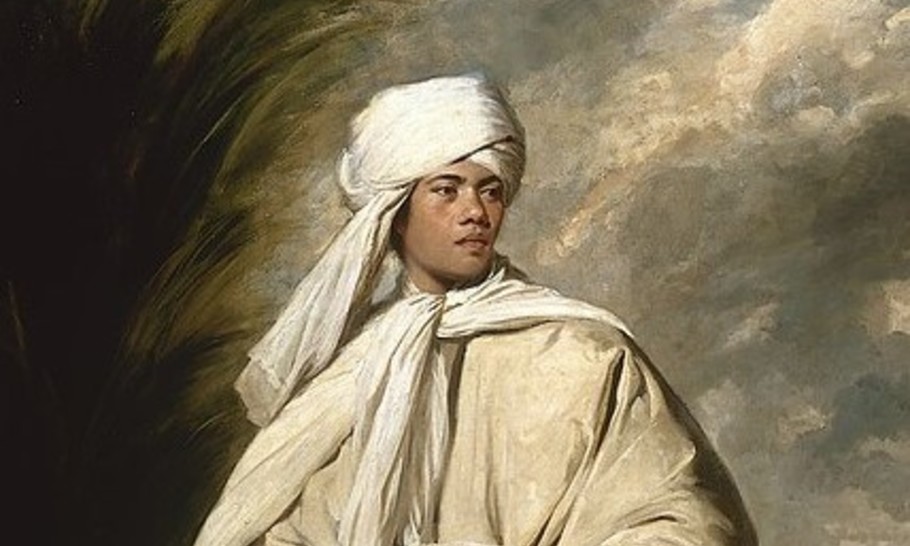
Portrait of Mai (Omai) by Sir Joshua Reynolds, oil on canvas, c.1775
Leslie Primo’s introduction to The Foreign Invention of British Art (Thames & Hudson, 287pp, $40/£30) throws up a roadblock instead of a pathway into his book. He suggests that British art didn’t exist until the foreigners invented it: “This radical study challenges the notion [whose notion?] of an exclusive British culture, and rewrites the history of Renaissance and Enlightenment art.” But the idea of British culture absorbing foreign skills and ideas is familiar, not radical. Britain was a great maritime power, explored and ruled many parts of the world, and was never an exclusive culture. And Primo certainly does not rewrite art history. Instead, he constructs a straw man and then tries to demolish it. Without providing a source for these so-called beliefs, he claims that “British art is firmly a national invention . . . clearly a propagandistic attempt [by whom?] to lay claim to an exceptional and exclusive heritage for the nation
. . . and foreign artists have been claimed [by whom?] as belonging to the British school.”
It’s true that foreign artists brought “new technical knowledge, talent and innovation that would revolutionize the cultural life of the nation . . . that the international nature of British art owes an enormous debt to immigration and integration.” But Primo immediately reveals that his thesis is not original, but well-known. The Yale Center for British Art notes that it “accepts the transnational character of British painting,” and the Tate Gallery includes artists “chosen for their contribution to British art, rather than for their own nationality alone.” Primo simply repeats the familiar story in a pedestrian way. His book is completely derivative, with potted history, deadly lists of obscure names and no original interpretations of the paintings.
His inclusions are strange, his structure weak. He rightly emphasizes the German Hans Holbein, the Dutch Peter Paul Rubens and the Flemish Anthony Van Dyck. But he doesn’t discuss the Italian Canaletto and the Swiss Henry Fuseli, and much more could be said about the Dutch Peter Lely and the Germans Godfrey Kneller and Johann Zoffany. Though Artemisia Gentileschi “made only a small indirect contribution to British art,” Primo claims that she “influenced generations of English artists” and (with her father Orazio) awards her a full chapter. He strangely includes separate chapters on Joshua Reynolds and William Hogarth, though both are English, not foreign artists. Primo even states, “the British character and temperament itself can be summed up in the two words: William Hogarth.”
Foreign artists emigrated to England to escape from political and economic unrest, from war, plague and religious oppression, most notably from the Spanish persecution of Protestants in the Netherlands and the St. Bartholomew’s Day massacre of French Protestants in 1572. Many painters who went to England were invited by aristocratic patrons who saw their work on the Grand Tour and offered them high wages and generous housing. Once in England, where native artists resented their intrusion and talent, they often formed part of “a tightly knit immigrant community”. While constantly emphasising foreign influence, Primo gives only one specific example, the impact of Rubens’ late landscapes on Constable’s The Hay Wain. Rubens recommended his pupil Van Dyck to James I. Primo writes that Van Dyck “reinvented and set new standards in English art using Titian’s flare [sic] for colour, precision of application and painterly approach,” but once again does not mention how this affected particular painters.
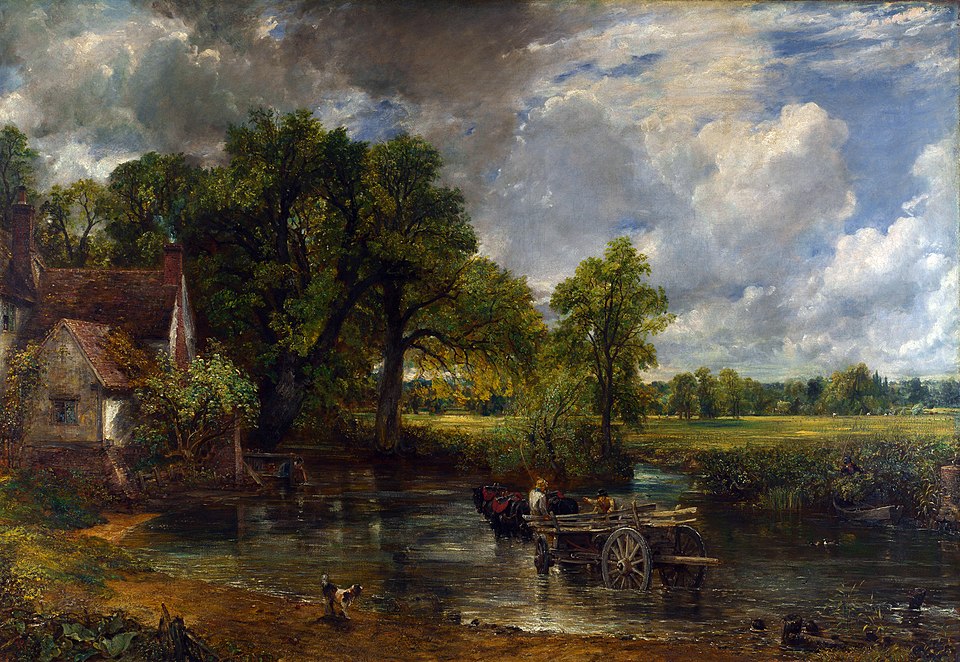
John Constable – The Hay Wain (1821)
Primo’s comments on the Swiss Angelica Kauffman are banal: “her paintings are products of their time. . . . She learned a lot quickly during her time in Europe . . . and had a glittering European career under her belt,” or sash. Rival artists believed that women like Angelica could not learn to draw the human figure, but this was difficult to do since she was forbidden to draw from a nude model. Primo notes Angelica’s “institutionalized inequalities,” but also contradicts himself by stating that “after her arrival in England Kauffman became part of the establishment.” He claims “she was at the very heart of the British art scene,” but he does not say which artists she influenced or how she helped to “invent British art.” Nathaniel Dance’s portrait of Angelica Kauffman while painting and wearing an elaborate costume is much more colourful, detailed and penetrating than her own softer and more sentimental self-portrait.
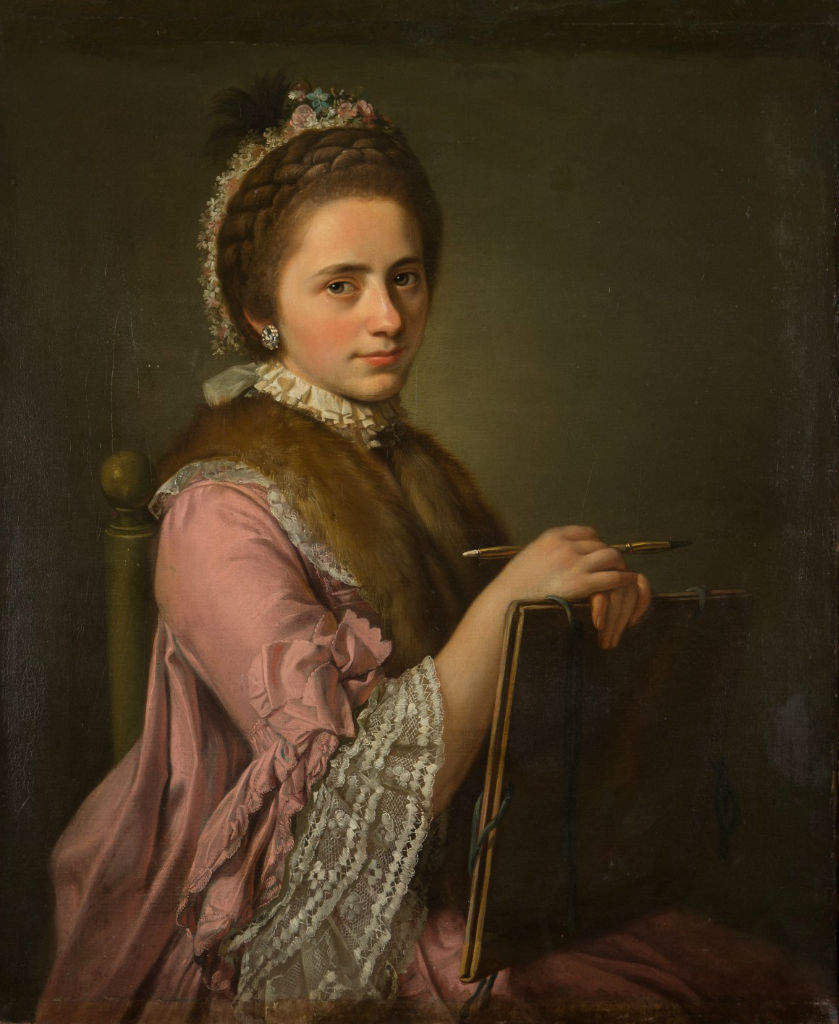
A Portrait of Angelica Kauffman R.A., by Nathaniel Dance, R.A. (1735-1811)
Rubens—both skilful diplomat and great artist—as well as Van Dyck, Kneller and Lely were all honoured with knighthoods. Rubens died in Antwerp, Artemisia Gentileschi in Naples, Angelica Kauffman in Rome, but most of the leading artists remained in England. Van Dyck and the Bohemian Wenceslaus Hollar married English wives; Holbein, Orazio Gentileschi, Van Dyck, Lely and Kneller all died in England.
Many errors occur in Foreign Invention. Marcus Gheeraerts’ portrait of Mary Rogers is ¾, not ½, length. In John Mortimer’s group portrait, Lord Sandwich is leaning on the pedestal, not on the nude statue. Guyana is in South America, not the Caribbean. This awkwardly written book, with its poor grammar and long, out-of-control sentences, itself seems translated from a foreign language. Though Primo’s pronouncements are often not worth saying, he repeats them again and again.
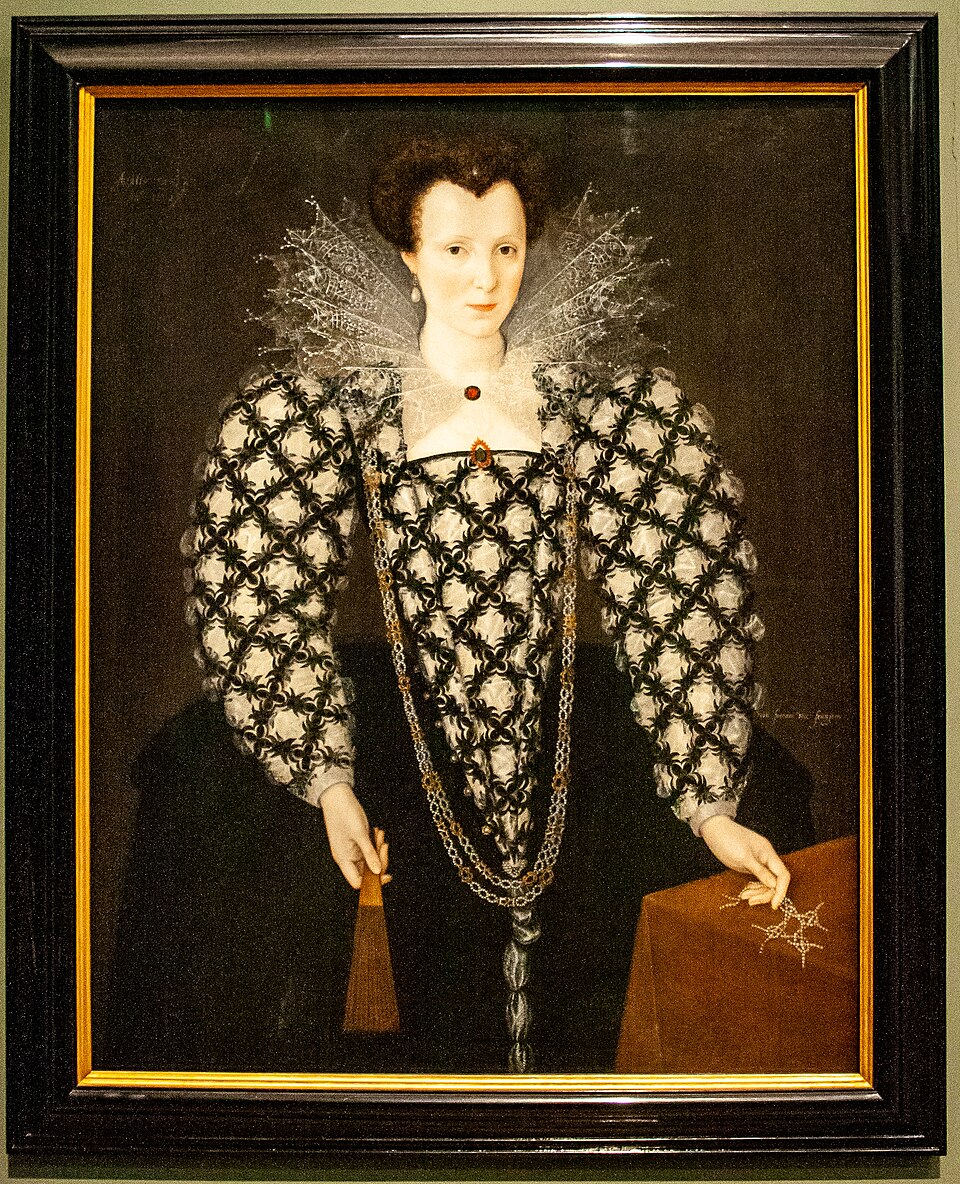
Marcus Gheeraerts (II) – Portrait of Mary Rogers – Lady Harrington
He also torments readers with simple-minded statements and feeble comments on the pictures that sound like lectures in Art 101: “the Roman author Virgil”; “the English King Henry VIII”; “Palladio a famous architect of the Italian Renaissance”; “Luther is said to have nailed his ‘Ninety-Five Theses’ ”; “Calvinism, a form of Protestantism based on the teachings of John Calvin”; “Florence, a city that had been made famous by great Renaissance artists of the recent past”; “the Grand Tour . . . involved embarking on an extensive tour”; “experience gained in travelling abroad added substantially to their skill-set”; Daniel Mytens “cannot have known” future events; “a vast amount of art made in Europe served a devotional purpose”; Artemisia, “an artist in full command of her medium . . . produced figures of women in a realistic style”; Rubens’ The Entombment, “clearly based on Caravaggio . . . demonstrates the influence that Caravaggio continued to exert”; Holbein’s intimate portrait of his wife and children “is one of his most personal paintings”; despite “a rather uncomfortable age gap, Rubens was enamoured with his new wife,” though her youth must surely have inspired him to love her.
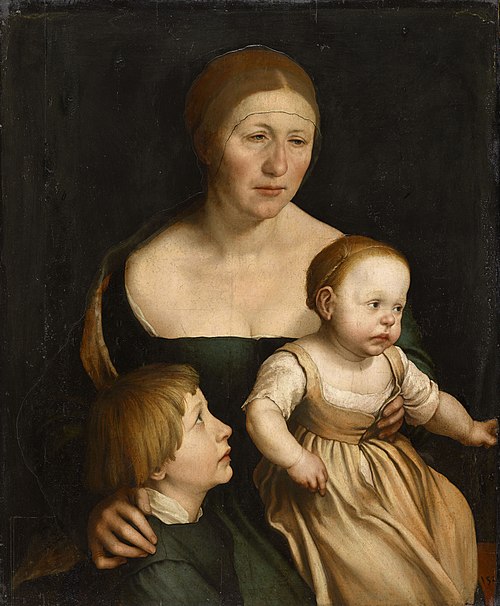
The Artist’s Family, c. 1528-1529, Hans Holbein the Younger
When Primo makes a rash attempt to describe two pictures he gets them all wrong. In Hogarth’s Marriage à-la-Mode there’s no evidence that the Black servants crouching in the corner ridicule the English customs and “quietly laugh to themselves”.
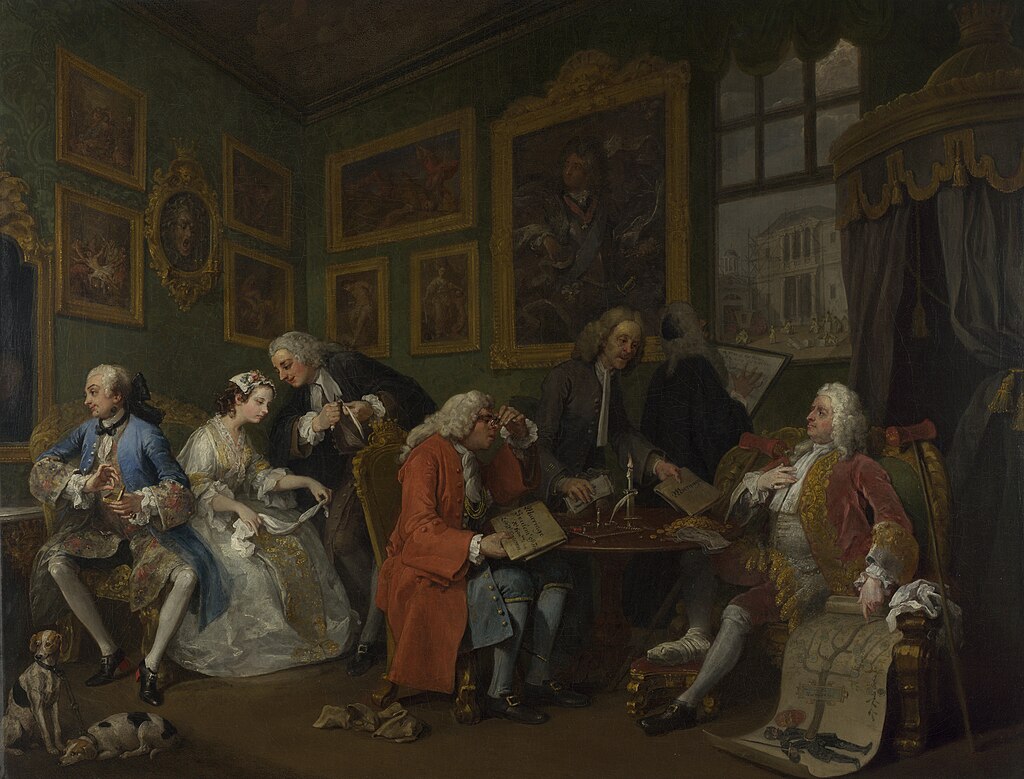
Marriage A-la-Mode: 1, The Marriage Settlement. William Hogarth
Omai, a Tahitian chief who learned some English on his voyage to England in 1774, had a charming personality and elegant manners, and became a celebrity in London. When Omai met the novelist Fanny Burney he was “wearing a satin-lined velvet suit, a bag wig, lace ruffles and a very handsome sword given to him by the king.” He even beat the Italian teacher Giuseppe Baretti at chess. The two worlds of Tahiti and England did not collide. Tahiti was a colony of France, not Britain. Omai was admired and fêted, not treated as an exotic novelty. English society did not get bored with him; his fame lasted for the entire two years of his visit.
Joshua Reynolds painted and ennobled Omai in 1775. His feet are bare; his forearm, hand and fingers are decoratively tattooed. He extends his right hand and places his left hand below his chest in gestures of acceptance and welcome. In this magnificent portrait (now owned jointly by the National Portrait Gallery and the Getty Museum in Los Angeles), Omai, standing in flowing white robes and turban beneath a stormy sky and tropical background, is handsome, dignified and heroic.
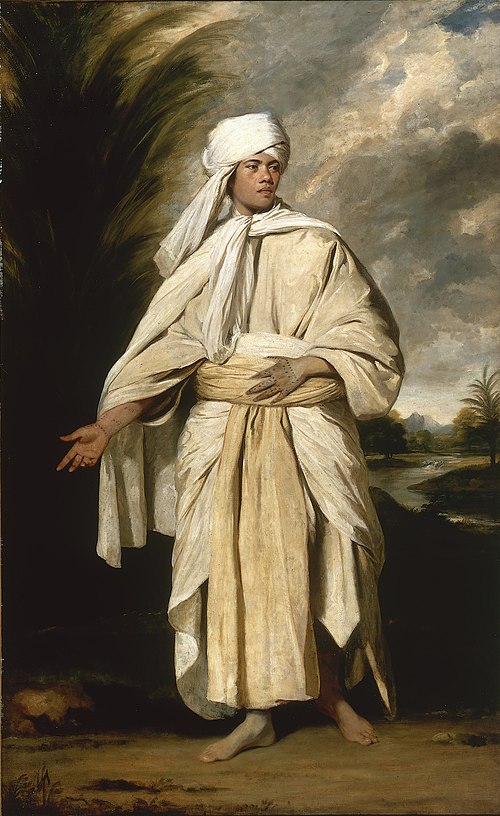
Portrait of Mai (Omai) by Sir Joshua Reynolds, oil on canvas, c.1775
Yet Primo pointlessly complains that the painting expresses the “preconceptions of the non-white European” and tells us “nothing about Omai’s life or what happened when he returned to the South Seas”—though this would have been quite impossible in the portrait. Omai was a Tahitian, not a “non-white European”. Primo states, again without evidence, that in another painting where Omai is talking to two Englishmen, he is “longing to be anywhere other than in this position”. He weirdly declares that other images “verge on caricature, suggesting that he was barely seen as human” and was “comparable to an animal”, though his elaborate costume described by Fanny Burney is hardly the dress of a subhuman creature.
Primo misses the chance to make some illuminating comparisons. With his usual lack of insight, he describes Holbein’s Lady with a Squirrel and a Starling (1528) as “a lady with a starling at her shoulder and a squirrel on her arm.” The woman wears a wide ermine cap that covers her ears, a white cape, white cuff and white veil above her black dress. The black starling on a twig near her shoulder faces right, like the woman. The bright-eyed brown squirrel, crunching a nut and with a long wavy tail brushing into her bodice, is held in her lap by a chain and faces left. The squirrel appears in the woman’s coat of arms, the starling alludes to her village in Norfolk. In Leonardo’s comparable Lady with an Ermine (1491) the physical resemblance of the animal and woman is very close. The lady and the ermine have the same high forehead, widely spaced dark eyes, sharp nose, thin lips and pale skin, and the form of her hand echoes the animal’s paw and head.
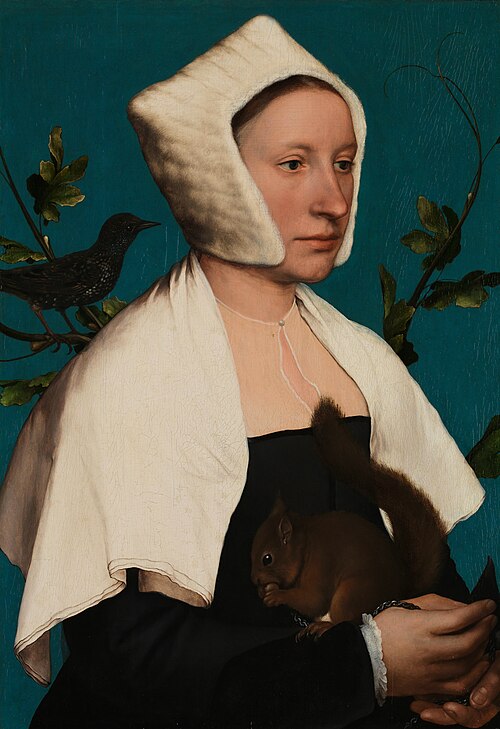
Lady with a Squirrel by Hans Holbein the Younger (1526–1528)
Daniel Mytens’ James Hamilton, Earl of Arran, age 17 (1623) and Thomas Gainsborough’s The Blue Boy, age 18 (1770)—painted 147 years later—provide another example of foreign influence that eludes Primo. Both teenagers, portrayed with aristocratic hauteur, are tall thin boys with long dark hair touching their shoulders, pale face, red lips, elaborate collar, bare right hand, covered left hand, long stockings and pointed shoes with puffy decorations. Mytens effectively contrasts the white collar, black jacket and red stockings; Gainsborough dazzles the spectator by painting the satin folds of the jacket and trousers.
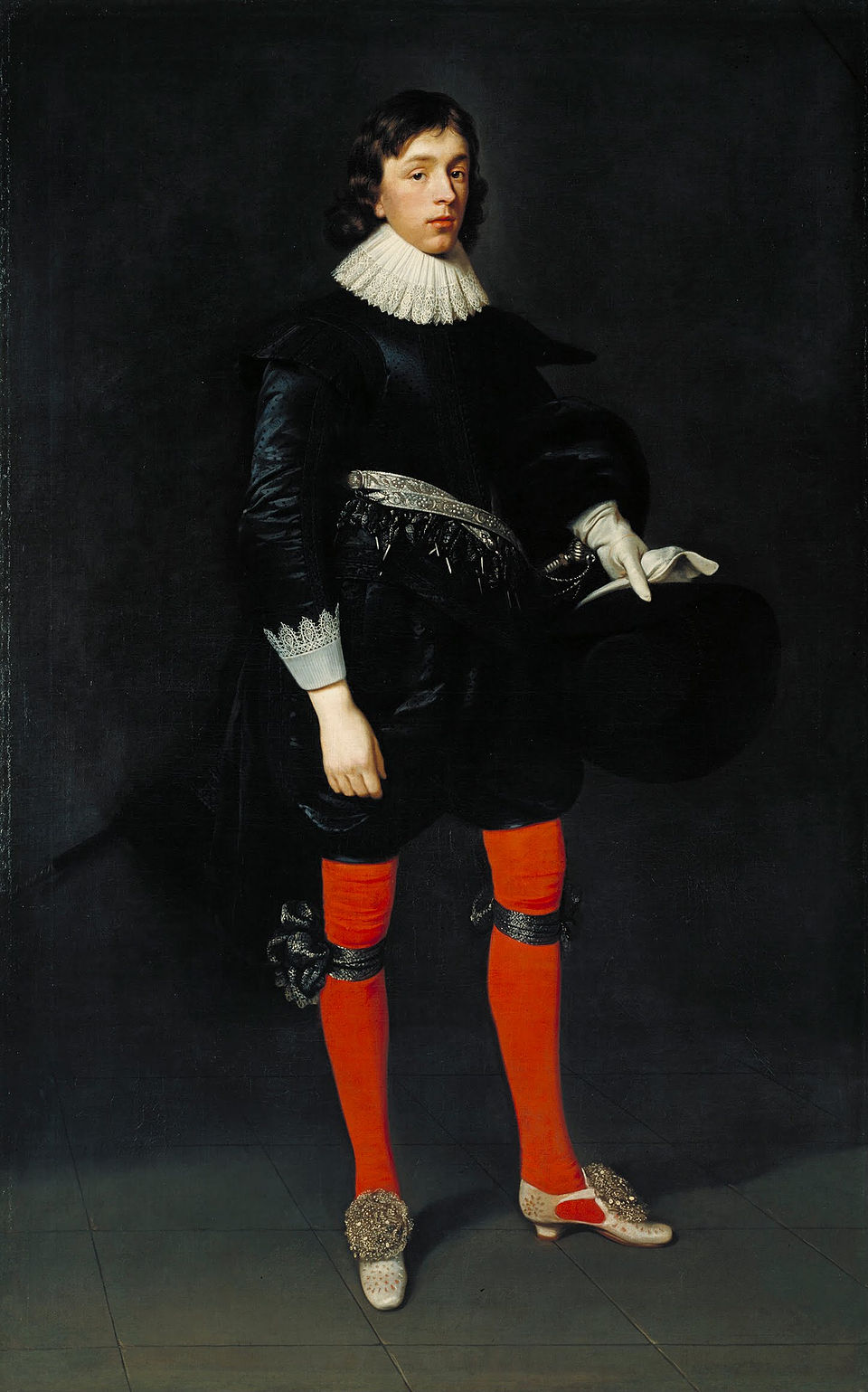
Daniël Mijtens – Portrait of James Hamilton, Earl of Arran, Later 3rd Marquis and 1st Duke of Hamilton, Aged 17
Primo emphasises multicultural diversity. Since all his subjects except Artemisia and Angelica are white males, he drags in irrelevant accounts of Black people who have nothing to do with the subject of foreign artists. He even cites his mother telling him that “No man is an island”, but doesn’t realize that she was (perhaps unwittingly) quoting John Donne’s Devotions.
Primo, who expects 17th-century Englishmen to treat their slaves as social equals, forces anachronistic words into his narrative at least 40 times: diversity, multicultural, patriarchal, discrimination (11 times), prejudice, gender bias, othering, objectification, misogyny, xenophobic, ostracise, persecute, racist — even weapons of mass destruction. He notes “the innate inferiority complex on the part of the British public”. He indulges in name-calling and insults white people while obsessively complaining about discrimination.
His knowledge of history is poor. His mindless exclamation—“one might wonder if there were any glorious episodes in English imperialism . . . which treated those who are not white as subhuman. . . . Surely not those whose lands have been claimed by Britain will benefit from its knowledge”—requires a sharp response. If Africa had been permanently closed to British colonialism because of the danger of disease and death, there would have been no hospitals, schools, law courts, roads, trains or honest government, and no awareness of the natural resources that remained underground. Almost all the African regimes since independence have been corrupt and violent. If colonialism was so evil and self-government so beneficial, why have some 20 million Africans risked their lives to escape to the European countries that had colonised them?
In a belated burst of whining and self-pity, Primo admits that he has “succumbed to the odd bout of self-righteousness”. As Samuel Johnson suggested, Primo should “clear his mind of cant”. He cites the help of 8 editors, who have let him down and failed “to knock his book into shape.” It’s surprising that Thames & Hudson has published a work with so many egregious faults and propagandistic statements. This book is worth no more than the promises of an alchemist, the predictions of an astrologer or the impostures of a mountebank.
Jeffrey Meyers has published five books on art: Painting and the Novel, The Enemy: A Biography of Wyndham Lewis, Impressionist Quartet, Modigliani: A Life and Alex Colville: The Mystery of the Real.
A Message from TheArticle
We are the only publication that’s committed to covering every angle. We have an important contribution to make, one that’s needed now more than ever, and we need your help to continue publishing throughout these hard economic times. So please, make a donation.




